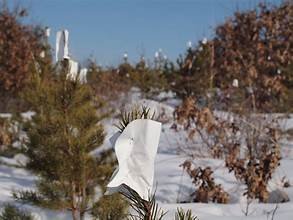hunter49
Well-known member
- Joined
- Dec 22, 2023
- Messages
- 92
If you wanna deep dive.
Habitat-talk.com
Habitat-talk.com
Follow along with the video below to see how to install our site as a web app on your home screen.
Note: This feature may not be available in some browsers.
Probably not worth the added step and cost with your heavier soils in MNHas anyone tried the root gel? It is supposed to help the seedlings hold moisture as they get established.
I’ve planted several thousand saplings over the years in northern MN and WI. Always with the expectation (and result) of significant loss. Blowdown areas always do the best. Remember that spruce varieties need quite a bit of sun. Your cedar choices should be more forgiving.
Assuming you ordered DNR trees, no?
I was chatting trees with an old timer last fall that grew Christmas trees for a long time in MN & WI. He is sold on the “bag method” (I believe). Had poor results with the bare root saplings, much like I have. I’ll see if I can pick his brain again soon. If anyone knows a cheap way around the bags, it’s him.
The thornless Honey locust pods draw draw deer like a magnet around me. Plus the flowers are a huge draw for bees and other pollinators. However they're considered invasive and are illegal to plant in many states so I would check before planting any of them..If you have a high water table could try some poplars(willows too) these you can cut back every yr or three for animal fodder,especially in dry times mid summer. 3mtr long poles sunk into the ground with crowbar. Multi tier farming. I'm also putting in thornless gleditsia for their pods which are sweet smelling and supposed to be very palatable to animals. I also find people are getting to tied up on trees that are local to area, planting some exotics opens up another fodder crop. Best of luck.

 You might want to try this on the cedars. You’re only planting 100 so it’s doable. You have do do it every fall. I had a friend plant white pines and after it snowed the deer came along and snipped the terminal bud that was sticking out of the snow. Ate them like candy. He tried stapling paper on the trees but he had thousands of them so it was to much trouble to do every year.
You might want to try this on the cedars. You’re only planting 100 so it’s doable. You have do do it every fall. I had a friend plant white pines and after it snowed the deer came along and snipped the terminal bud that was sticking out of the snow. Ate them like candy. He tried stapling paper on the trees but he had thousands of them so it was to much trouble to do every year.